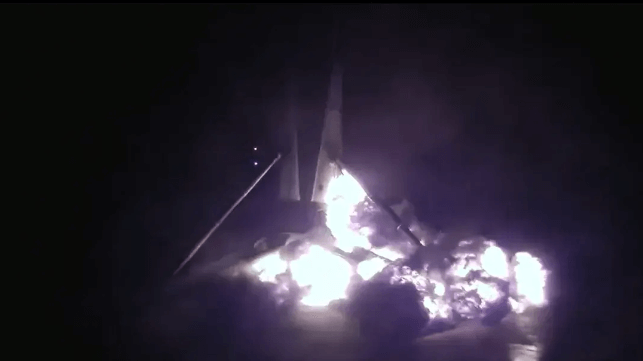Video: Failed Rocket Landing Shows Value of Unmanned Vessels

SpaceX's rocket landing vessels are unmanned and autonomous, and for good reason. The converted deck barges receive SpaceX's reusable booster rockets when they return to earth, and while that process goes smoothly the majority of the time, it sometimes ends with a damaged rocket - as with Wednesday morning's launch.
At about 0348 hours Wednesday morning, a Falcon 9 rocket launched from Cape Canaveral Space Force Station with a payload of 21 Starlink satellites. The launch and ascent went as planned, and the booster began its descent to land on the barge (named A Shortfall of Gravitas in tribute to a science fiction author).
The booster touched down, but the flames from its engine did not cut off, and it gradually fell over - an outcome that might have been dangerous for a crewed vessel, but endangered no personnel on the self-navigating barge.
SpaceX booster 1062 has suffered a landing failure after its 23rd flight! ????
— Everything Space (@totalspace360) August 28, 2024
This ends a run of 267 consecutive landings. pic.twitter.com/2TNhegTjp9
It was the booster's 23rd launch, and its fiery end illustrates the success of the company's reusable-rocket system. Instead of spending on manufacturing disposable boosters for each mission, SpaceX designed rockets tjat can be recovered, overhauled and relaunched dozens of times. The savings make SpaceX commercially competitive as a launch service provider.
After the failed landing Wednesday morning, the Federal Aviation Administration said that it would be grounding all Falcon 9 rockets pending the outcome of an investigation. The grounding will delay the launch of Polaris Dawn, a five-day, manned orbital mission that will include the world's first commercial spacewalk with SpaceX's proprietary spacesuit. The four astronauts for the mission are currently in quarantine and awaiting permission to launch.
